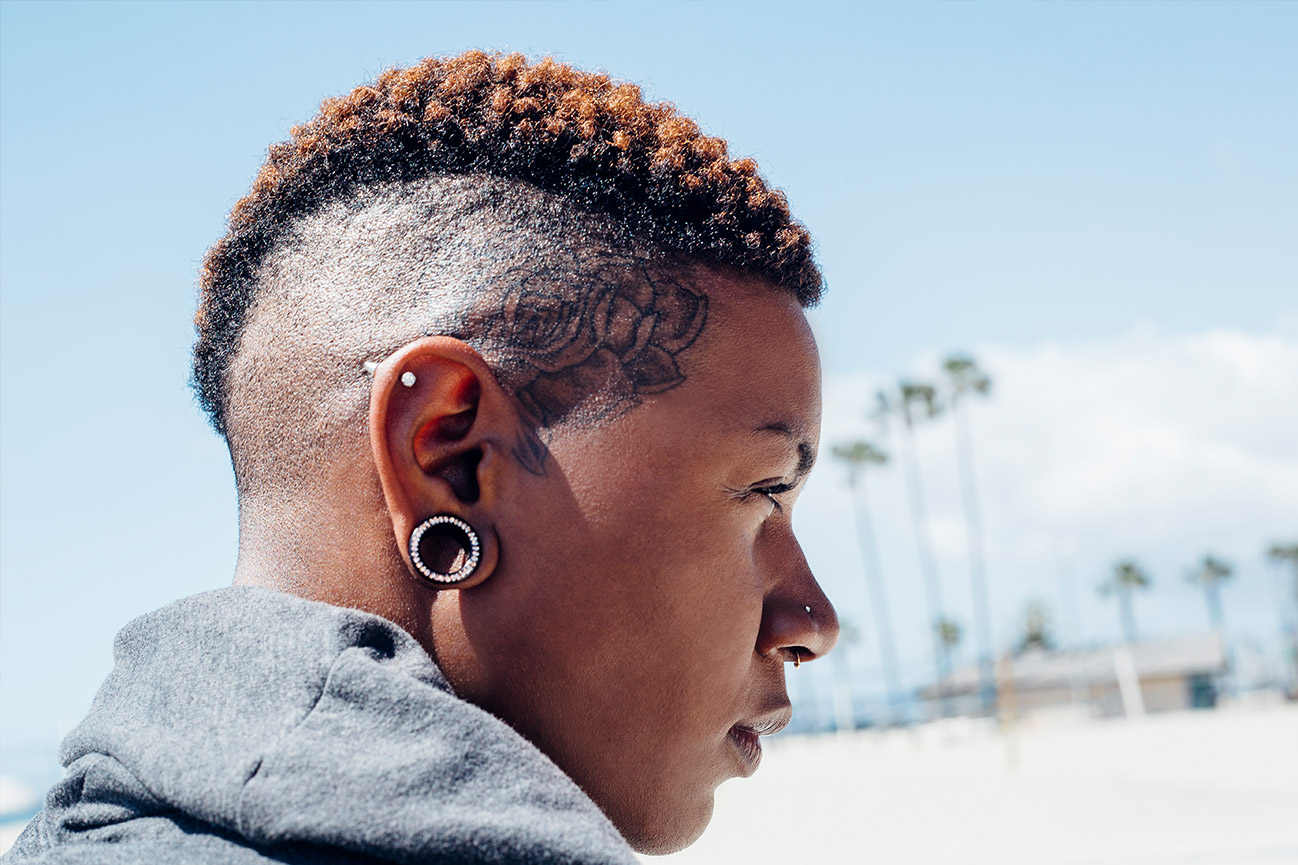In the modern world, tattoos have undergone a remarkable transformation, evolving beyond mere body art to become powerful tools of individualism, cultural pride, and artistic creativity. These indelible marks on the skin are no longer confined to symbols of rebellion; they have transcended societal boundaries and infiltrated every facet of our lives, from the workplace to the political arena. As society progresses, so does our perception of tattoos, embracing them as a means to celebrate individuality and honor the diverse tapestry of cultural backgrounds that enrich our global community. This exploration delves deep into the metamorphosis of tattoos in contemporary society, shedding light on their growing inclusivity in workplaces, empowering individuals to embrace their cultural tattoos without reservation, and fostering a world that thrives on acceptance and diversity.
A HISTORY OF SHIFTING PERSPECTIVES
Before embarking on our journey through the modern landscape of tattoos, it is imperative to traverse the historical trajectory that led us here. Tattoos boast a storied history that spans thousands of years, tracing their origins back to ancient civilizations. Across many cultures, tattoos held profound meanings, serving as conduits for rites of passage, religious convictions, or symbols of tribal identity. However, history also witnessed periods when tattoos faced disdain and stigma, being associated with criminality or defiance. Despite enduring these tumultuous tides, a paradigm shift has unfolded, leading us to revere tattoos for their artistic expression and profound cultural significance.
The perception of tattoos has ebbed and flowed through various epochs, mirroring the ever-changing currents of social dynamics. In some societies, tattoos were revered as symbols of bravery and honor. Indigenous tribes spanning continents harnessed tattoos as a form of communication, engraving life’s milestones, paying homage to deities, and forging a deep connection with the natural world. Each tattoo etched a profound meaning, a narrative that seamlessly interwoven within the fabric of human existence.
However, contrasting viewpoints existed, with other cultures casting a skeptical eye upon tattoos, often associating them with societal outcasts or criminals. The colonial era, stretching from the 15th century to the mid-1900s, bore witness to indigenous communities grappling with hostility towards their tattoo practices as colonizers imposed their values. The traditional significance of tattoos gradually dimmed beneath the weight of imposed norms.
In recent history, tattoos carried a stigma, entwined with notions of rebellion or counterculture movements. They became synonymous with societal deviance, leading to individuals bearing tattoos being marginalized as outsiders or even perceived as threats. However, the latter half of the 20th century experienced a seismic transformation in the perception of tattoos. The rise of art movements heralded a tattoo renaissance, with artists recognizing the human body as a canvas for creative expression. As individuality and self-expression gained momentum, tattoos found acceptance. Influential figures, ranging from celebrities to athletes and musicians, embraced tattoos, defying societal norms and catapulting tattoo culture into the mainstream.
EMBRACING TATTOOS IN THE MODERN WORKPLACE
In recent years, the workplace landscape has witnessed a transformative shift in its approach to tattoos. Once viewed as unprofessional, visible tattoos led to concealment. However, a more progressive and inclusive mindset has emerged. Companies now understand that tattoos do not define skills or qualifications, prompting a celebration of body art as an extension of one’s personality.
This change is evident across various sectors, with creative industries like design, media, and entertainment wholeheartedly embracing tattoos as expressions of artistic sensibility. Tattoos are viewed as symbols of confidence and self-assuredness, qualities valued in diverse professional settings. Some companies even promote tattoo-friendly policies, acknowledging society’s growing acceptance of body art. The modern workforce emphasizes authenticity and individuality, recognizing that unique personalities contribute to dynamic work environments.
Moreover, the rise of remote work has accelerated this transformation. As more individuals adopt remote setups, traditional dress codes have relaxed, and focus has shifted from appearance to ideas. With virtual interactions now dominant, physical appearances matter less, aligning with the trend of celebrating authenticity in the workplace. Embracing tattoos fosters inclusivity, recognizing the value of individuals beyond the superficial, empowering employees to be true to themselves. While conservative perspectives persist in some sectors, the overall trend towards embracing body art underscores the positive impact of an accepting and diverse workplace culture.
TATTOOS IN FASHION: A CANVAS TO CATWALK TRANSFORMATION
Tattoos have undeniably transcended their artistic boundaries to make an entrancing mark in the realm of fashion. Models proudly showcasing their inked skin have orchestrated a paradigm shift in the fashion industry, effortlessly challenging long-standing norms of beauty and setting the stage for an all-encompassing vision of elegance. This evolution has ignited a trend where clothing brands and designers find themselves irresistibly drawn to the magnetic charm of tattoo artistry. Captivated by its allure, they ingeniously incorporate tattoo-inspired patterns and motifs into their collections, celebrating individuality and authenticity as an essential element of style. In the present day, the fashion world doesn’t merely acknowledge tattoos; it wholeheartedly embraces them as an art form in their own right, an artistry that exquisitely celebrates individuality and authenticity as the bedrock of true style.
Design visionaries like Vivienne Westwood have spearheaded the fusion of unconventional fashion and tattoo culture since the 1990s. The contemporary runway, once hesitant to embrace tattooed models, now serves as a platform where body art seamlessly interlaces with high fashion. Even iconic fashion houses such as Dior have ventured into tattoos, adorning models with temporary script tattoos during their Spring Summer 2018 Haute Couture Show. This audacious move not only shattered conventions but also resonated with the growing wave of those who had celebrated tattoos on the runway before them. This progressive step by a brand synonymous with refined elegance underscores a significant shift, a testament to the expanding embrace of individualism and diversity within the realm of high fashion.
BREAKING BARRIERS AND DISPELLING STEREOTYPES
In a world that can sometimes be quick to judge, tattoos have become a tool for breaking barriers and dispelling stereotypes. The presence of tattoos no longer dictates one’s character or abilities. It’s not just about rebellion or counterculture; tattoos tell stories of triumph, resilience, love, and belonging. As we see more people from all walks of life proudly displaying their tattoos, we are reminded that individuality and self-expression should be celebrated, not stifled.
Beyond their role as expressions of identity and creativity, tattoos have also emerged as a form of healing and transformative art for many individuals. Tattooing can be a therapeutic process, helping people cope with challenging experiences, honor lost loved ones, or symbolize personal growth and resilience. The act of getting a tattoo can serve as a cathartic release, allowing individuals to externalize their emotions and turn their pain into something beautiful.
In recent years, the concept of “resilience tattoos” or “healing tattoos” has gained traction, where survivors of difficult life events choose to commemorate their journeys through ink. These tattoos often bear profound symbolism, depicting strength, hope, or a sense of triumph over adversity. For some, it becomes a visual reminder of their resilience, reminding them of their ability to overcome challenges. Furthermore, tattoos can also play a significant role in the lives of cancer survivors. Many individuals who have battled cancer choose to mark their victory over the disease with a tattoo, symbolizing their journey to remission and a newfound appreciation for life. These tattoos can be deeply personal and empowering, serving as a testament to their courage and determination.
THE ART OF TATTOOING: FROM TRADITIONAL TO CONTEMPORARY STYLES
The art of tattooing has witnessed a dramatic evolution, spanning an array of styles and techniques. From traditional tribal tattoos to intricate watercolor designs and photorealistic portraits, the possibilities for tattoo artistry are limitless. Traditional tattoo styles, such as Japanese Irezumi, American Traditional, and Polynesian Tatau, continue to hold cultural significance, passed down through generations with deep historical and spiritual meanings.
Contemporary tattooing has birthed a wealth of innovative styles. Abstract tattoos, minimalist designs, and geometric patterns have gained popularity among those seeking a modern and distinctive aesthetic. The Neo-Traditional style breathes new life into classic motifs, infusing them with bolder lines and vibrant colors that captivate attention and celebrate timelessness. Collaboration between tattoo artists and other creative disciplines has also given rise to multidimensional masterpieces, as artists partner with painters, sculptors, and graphic designers to push the boundaries of tattoo artistry, creating true works of art on skin.
Among the influential subcultures shaping modern American tattoo culture, sailors hold a significant place, leaving an indelible mark on the art of tattooing. Navigating treacherous oceans, sailors used tattoos as tangible records of their journeys, experiences, and identities. Symbols of exploration and camaraderie remain an eternal muse, converging with modern artistry. Rooted in cultural heritage, these timeless tattoo designs such as pin-up girls, eagles, and anchors transcend eras, bridging history and the present, reminding us that tattooing is an ever-evolving canvas.
TATTOO RITUALS AND RITES OF PASSAGE IN MODERN CULTURE
Throughout history, tattoos have been inextricably linked to rituals and rites of passage in diverse cultures. In modern society, certain communities uphold these traditions, infusing tattoos with deep cultural and spiritual significance. For instance, many Pacific Island cultures view tattooing as an integral part of rites of passage, symbolizing the transition from adolescence to adulthood. The process of tattooing often involves traditional methods, such as hand-tapping, transforming it into a sacred and communal experience.
Similarly, the sphere of tattoos has been influenced by subcultures like prison and gang culture, where body art takes on additional layers of meaning. Tattoos in these contexts serve as markers of identity, affiliation, and personal history. They carry a unique language, with specific designs and placements conveying distinct messages. These tattoos may denote rank, group membership, or even criminal history. While these tattoos may remain concealed from the public eye, they remain integral to the cultural fabric within these communities, representing badges of honor, protection, or belonging.
Some indigenous tribes in Africa and South America continue to uphold ancestral tattoo practices, using them to signify tribal bonds, spiritual connections, and accomplishments. These tattoos brim with symbolism and are passed down through generations, safeguarding cultural heritage. Even outside indigenous contexts, tattoos are embraced as markers of significant life events, such as marriages, births, or career milestones. These tattoos serve as enduring reminders of pivotal moments and bear sentimental value that transcends aesthetics. Additionally, the legacy of prison and gang culture underscores the intricate interplay between body art and identity, reflecting the complexities of the human experience through the canvas of tattoos.
CONCLUSION:
The world of tattoos has expanded far beyond being a form of body art; it has become a powerful vehicle for individualism, cultural celebration, healing, and storytelling. From their ancient origins to their present-day significance, tattoos have undergone a remarkable transformation, breaking barriers and defying stereotypes along the way. The increasing acceptance of tattoos in the workplace, political arenas, and the fashion world reflects society’s growing appreciation for diversity and individuality. Embracing tattoos means embracing the rich tapestry of human experiences and cultural heritage, fostering a more inclusive and accepting world.
As tattoos continue to evolve as a dynamic and ever-changing art form, they will undoubtedly remain a timeless and powerful means of communication, uniting us all in our shared journey of self-discovery and acceptance. So, let us wear our tattoos with pride, for they are not just ink on our skin, but living expressions of the beauty, complexity, and diversity of the human spirit. And in doing so, may we continue to celebrate the allure and power of tattoos to inspire, uplift, and empower us in this ever-changing world.






